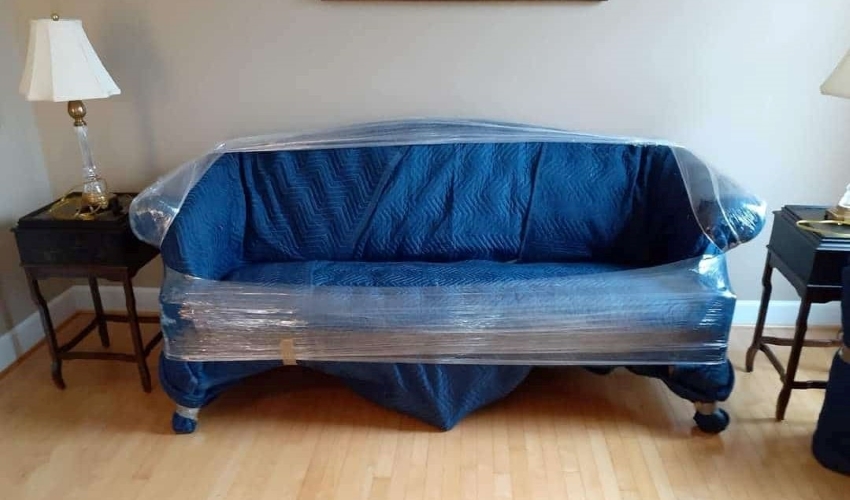
Selecting the right packing materials is essential to ensure the safe transit of your belongings during a move. Among the various supplies available, moving wrap stands out as a versatile and indispensable tool. Moving wrap helps secure items tightly, preventing movement and potential damage during transport. It is especially effective when used on furniture, appliances, and grouped boxes, offering an extra layer of protection without leaving adhesive residue. Pre-stretch film , similarly, provides excellent hold, making it ideal for wrapping and securing irregularly shaped items or bundles. Other essential packing materials include sturdy cardboard boxes for structural support, bubble wrap for cushioning delicate items, and corrugated sheets for separation. Wrapping film roll is also crucial for securing items together, preventing shifting during transit. Choosing the right combination of these materials, with moving wrapping at the forefront, can make the difference between a smooth, worry-free move and one that results in damaged goods and added stress. Moving wrap is a plastic stretch wrap used to secure items like furniture for transport, storage, and renovation, ensuring safety and preventing damage.
Why Choose Our Stretch Film Over Competitors?
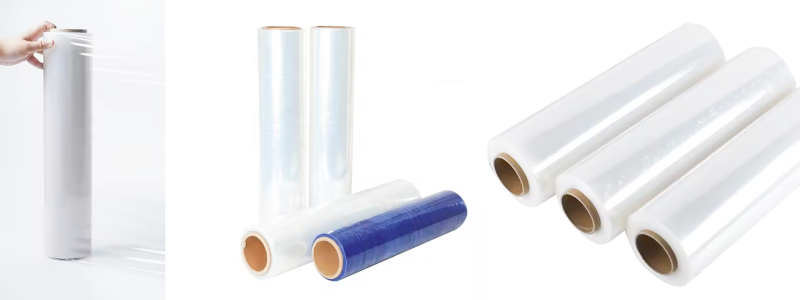
| Attribute | Description |
|---|---|
| Material | PE (Polyethylene), LLDPE (Linear Low-Density Polyethylene) |
| Type | Stretch Film |
| Industrial Use | Packaging |
| Place of Origin | Fujian, China |
| Length | Customizable |
| Width | Customizable |
| Feature | Moisture-proof, ensuring items remain dry and protected during transit |
| Hardness | Soft, making it easy to handle and stretch manually |
| Processing Type | Casting, ensuring durability and uniform thickness |
| Transparency | Transparent, allowing visibility of wrapped items |
| Brand Name | PWP Stretch Film |
| Surface | Smooth, providing easy application and adhesion |
| Thickness | 20 - 30 microns |
| Sample Availability | Free sample available within 3 days |
| Application/Use | Suitable for securing items during packing, moving, or storage |
| Certification | ISO9001 certified, ensuring quality standards |
| Color | Transparent, suitable for various packaging needs without hiding contents |
| Packaging | Delivered in a durable packaging box for ease of transport and storage |
| Special Notes | Designed for heavy-duty manual use, suitable for both household and industrial packing needs. |
When planning a move, having the right supplies is vital to protect your belongings and ensure a smooth transition. One of the most critical materials to consider is moving wrap, known for its versatility and reliability in securing items. However, other essential packing materials are just as important to complement its effectiveness.
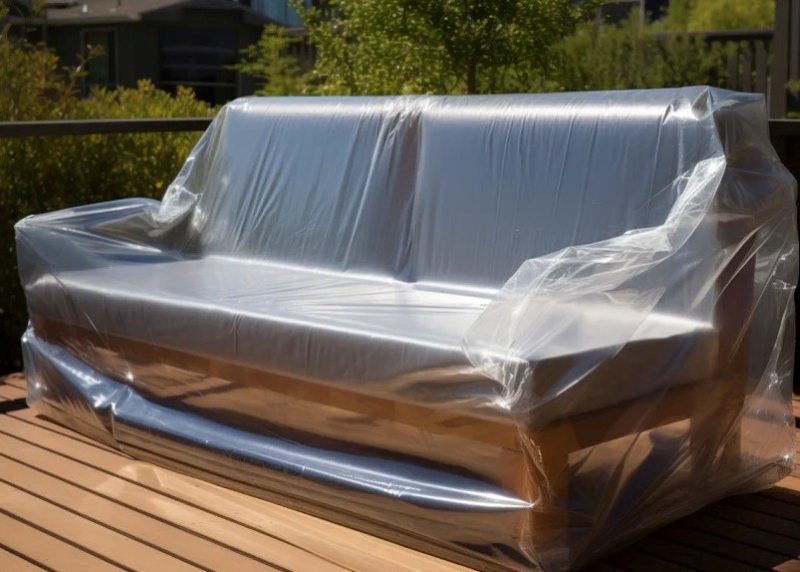
Cardboard boxes are foundational to any move, offering various sizes and types tailored to specific needs. Sturdy, high-quality corrugated boxes are ideal for holding heavier items due to their reinforced construction, which adds strength and prevents bending or tearing. The strength of these boxes ensures that even fragile or valuable items are securely contained during transit. Opting for double-walled boxes can provide additional protection for bulkier or delicate belongings. Properly choosing boxes helps distribute weight evenly, simplifying the moving process and making stacking more stable.
Corrugated sheets play a significant role in creating layers of protection within packed boxes. Placing these sheets between items helps maintain structural integrity by preventing direct contact and potential friction damage. For instance, dishes, picture frames, and books can be separated with corrugated sheets to ensure they stay intact. Using these sheets alongside wrap for moving can provide even better protection by stabilizing items within boxes and minimizing unwanted shifting. This combination safeguards items from potential pressure or impact during transport, ensuring they arrive in perfect condition.
A moving wrap roll is an essential packing tool used for securing and protecting items during a move. This roll contains a stretchable plastic film that clings tightly to itself without the need for adhesive, making it perfect for bundling furniture, securing drawers and cabinet doors, and holding multiple items together. Many plastic film suppliers offer a variety of options, allowing you to choose the best product for your specific needs. The moving packing wrap roll is commonly used to safeguard surfaces from scratches, keep grouped items intact, and prevent movement during transport, making it a great alternative to cling wrap for moving. Available in different widths and thicknesses, it can be applied easily around various objects by hand or using a dispenser, providing an efficient way to ensure belongings are stable and well-protected.
When preparing for a move, the right protective cushioning supplies are crucial for safeguarding delicate and valuable items. Moving wrap provides a strong, flexible layer to secure items in place, but pairing it with other cushioning materials ensures comprehensive protection during transit.
Bubble wrap is an essential material known for its excellent protective qualities, particularly for fragile items. Its air-filled pockets create a cushioned barrier that absorbs shocks and impacts, making it ideal for wrapping breakable items such as glassware, vases, and electronics. For best results, ensure that the bubble side faces inward to provide maximum protection against jostling. Additionally, furniture wrap for storage can be used alongside bubble wrap to offer extra protection for larger items like furniture, preventing scratches and dust accumulation. Layering items with bubble wrap before applying moving wrap creates a secure, double-layer defense that holds items in place and minimizes damage risks.
Air pillows are another valuable cushioning material, offering a lightweight solution for filling voids within moving boxes. Their air-filled construction not only reduces overall box weight but also prevents items from shifting during transit. Air pillows work exceptionally well when combined with moving wrap or packing wrap, as they keep wrapped items snugly packed, reducing the potential for movement. This combination is particularly beneficial for larger boxes holding non-fragile items that still require stabilization, such as toys, shoes, or miscellaneous household items.
Foam peanuts are a reliable choice for filling gaps and absorbing impacts. They flow around items, filling any empty space and creating a shock-absorbing layer. Using foam peanuts alongside moving wrap enhances the protection by preventing items from moving or colliding within the box. For environmentally conscious movers, eco-friendly foam peanuts made from biodegradable materials provide the same cushioning benefits while reducing environmental impact. Reusing foam peanuts for future moves or donating them ensures minimal waste and continued utility.
Each of these cushioning materials complements moving wrap to create a robust packing system, ensuring that items remain safe and secure throughout the moving process.
Effective labeling and organizational tools are key to a smooth moving process. While moving wrap ensures items stay secure and protected, integrating strategies like wrapping and tagging pallets can make unpacking and inventory management more efficient. This combination minimizes confusion and helps maintain order throughout the move.
Labels are indispensable for inventory management and quick identification of packed items. Clear, detailed labels on each box help you quickly locate essential items without sifting through multiple boxes. This is particularly beneficial when using moving wrap, as its non-adhesive nature keeps items secure but makes traditional handwriting directly on wrapped boxes ineffective. It’s crucial to use durable, self-adhesive labels or tags that adhere well to moving wrap and other packing materials. Consider categorizing labels by room or item type, and use color-coded systems to streamline the process. Clearly marked boxes not only aid in efficient unpacking but also help movers handle specific boxes with greater care if they are marked as fragile or high-priority.
Integrating packing slips and checklists can add an extra layer of organization. A packing slip lists the contents of each box, allowing for quick verification that nothing is lost or misplaced. Attaching a slip to the outside of a box wrapped in moving wrap helps ensure it’s visible without needing to unwrap or open the box. Checklists complement packing slips by keeping track of what items have been packed and what still needs to be handled. Using these tools ensures that every item, from delicate glassware to bulkier furniture, is accounted for, streamlining both the loading and unpacking phases. This systematic approach can alleviate the stress of moving, making the process more manageable and organized.
Efficient packing requires more than just the right materials; it demands thoughtful strategies that maximize protection and organization. Moving wrap plays a crucial role in securing items, but combining it with other packing supplies and implementing smart techniques can elevate the overall safety and efficiency of the move.
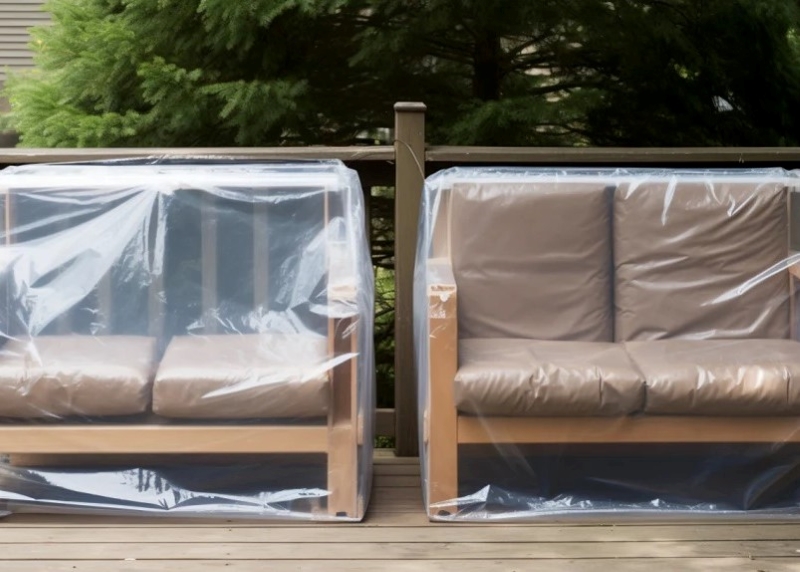
Using a combination of materials such as moving wrap, bubble wrap, and air pillows provides layered protection that can withstand the rigors of transport. Start by wrapping fragile items with bubble wrap to create a cushioning base, ensuring that all surfaces are covered. Follow up with moving wrap to secure the bubble wrap in place, preventing it from unraveling and keeping the item compact. For added stability, place air pillows strategically within boxes to fill any voids and reduce movement. This combination ensures that even if the box is jostled, the contents remain protected and snug.
Corrugated sheets are highly effective when used as dividers between items in boxes, particularly for those that are delicate or need to be kept separate. When packing plates or framed pictures, place a corrugated sheet between each item to prevent scratches or breakage. After wrapping these items with moving wrap, stack them vertically with sheets in between for optimal support. Foam peanuts are ideal for filling the remaining gaps within a box. Pour them around wrapped and separated items to create a shock-absorbing layer that minimizes impact during transport. This combination with moving wrap helps keep items secure and insulated from external pressure.
Effective labeling is essential for an organized move, allowing easy access and proper handling of boxes. After securing items with moving wrap, use bold, clear labels to identify the contents and destination room of each box. A room-based labeling system speeds up the unpacking process by enabling movers to place boxes in the correct areas right from the start. For fragile items, include an extra “Fragile” or “Handle with Care” label to signal the need for gentle handling. This strategy works in tandem with moving wrap, which already signals protection but benefits from these additional visual cues to ensure the safest possible treatment during the move.
Moving wrap is a versatile tool for protecting and securing items during transport, storage, or renovation. Proper application and careful handling are essential to maximize its effectiveness while preventing damage to your belongings. This guide provides a detailed overview of how to use moving wrap, including preparation, application techniques, and securing methods, as well as key precautions to avoid common issues such as surface damage, over-tightening, or environmental impacts.
Prepare the Item:
Start Wrapping:
Apply Even Layers:
Secure Loose Components:
Finish and Test:
Precautions for Using Moving Wrap:
Avoid Surface Damage:
Prevent Over-Tightening:
Consider Environmental Conditions:
Handle Sharp Edges:
Storage and Reuse:
By following these steps and precautions, you can safely and effectively use moving wrap to protect your belongings during any move or storage process.
Finding a reliable moving wrap supplier is essential for ensuring quality and efficiency in packaging solutions. This guide introduces various channels for sourcing suppliers, including online marketplaces, trade shows, supplier directories, referrals, social media, local distributors, and government databases. Each channel is explained in detail, followed by its advantages and disadvantages, helping readers make informed decisions when choosing the best sourcing method for their needs.
Online marketplaces are digital platforms that connect buyers with suppliers from around the world. These platforms often include a variety of moving wrap suppliers, offering different product types, sizes, and pricing.
Advantages:
Disadvantages:
Trade shows are events where suppliers showcase their products to potential buyers. These are excellent venues for exploring moving wrap solutions, networking, and negotiating deals.
Advantages:
Disadvantages:
Supplier directories are curated databases listing verified suppliers along with their contact details, product offerings, and profiles.
Advantages:
Disadvantages:
Recommendations from trusted business contacts, colleagues, or industry peers can help identify reliable moving wrap suppliers.
Advantages:
Disadvantages:
Social media platforms and online ads are increasingly used by suppliers to promote their products and connect with potential customers.
Advantages:
Disadvantages:
Local distributors and retailers are accessible channels for sourcing moving wrap within your region. Products can often be inspected before purchase.
Advantages:
Disadvantages:
These databases compile verified suppliers in specific industries, often categorized by region or product type.
Advantages:
Disadvantages:
By understanding the nature, advantages, and disadvantages of each channel, you can strategically select the most suitable method for finding reliable moving wrap suppliers tailored to your specific needs.
Selecting the right moving wrap supplier is essential to ensure quality, reliability, and cost-effectiveness.
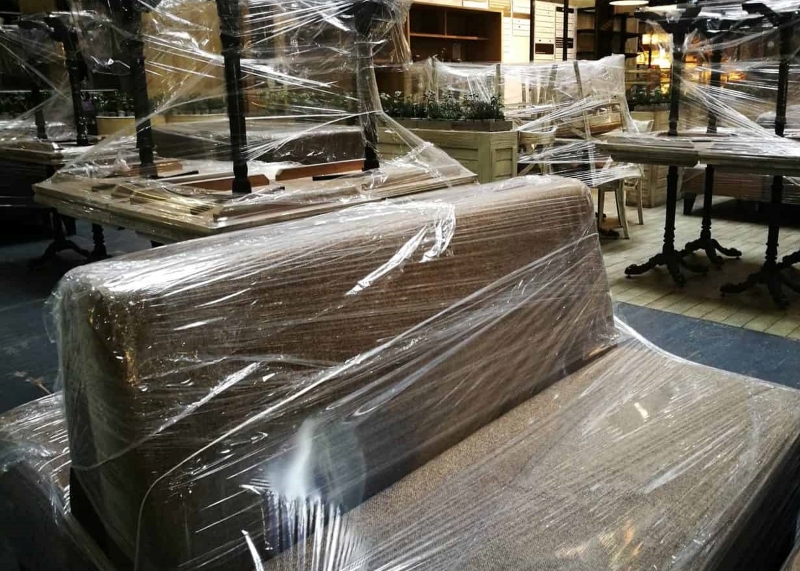
Here are the key factors to consider:
Assess Product Quality:
Evaluate Supplier Reputation:
Variety of Options:
Pricing and Value:
Shipping and Delivery:
Customer Service:
Certifications and Standards:
Additional Services:
By carefully evaluating these factors, you can select a moving wrap supplier that aligns with your requirements, ensuring the safe and efficient handling of your items during transport or storage.
Commitment to Quality:
PWP Stretch Film prioritizes delivering high-quality packaging solutions designed to ensure the safe transport and protection of goods. By offering durable and effective moving wrap, our company meets the needs of various industries that rely on secure and reliable packaging.
Extensive Experience:
With 18 years of expertise in manufacturing and supplying stretch films, PWP Stretch Film has a proven track record in the packaging industry. This wealth of experience positions the company as a trusted supplier for customers seeking reliable moving wrap solutions.
Comprehensive Product Range:
As a leading provider of stretch film, pallet wrap, and stretch wrap, PWP Stretch Film offers a versatile product line that caters to a wide range of packaging needs, making it a one-stop solution for moving wrap and related products.
Advanced Manufacturing Capabilities:
Utilizing state-of-the-art automated systems and advanced technology, PWP Stretch Film produces high-performance moving wrap with exceptional consistency and reliability. These innovations ensure that the company’s products meet the rigorous demands of transportation and storage.
Tailored Solutions:
PWP Stretch Film stands out by providing customized moving wrap and contract packaging services. This flexibility allows businesses to obtain products tailored to their specific requirements, ensuring optimal performance and customer satisfaction.
Global Reach and Accessibility:
With a strong presence in both domestic and international markets, PWP Stretch Film ensures ours moving wrap products are readily available at various locations, making it a dependable supplier for businesses worldwide.
Customer-Centric Approach:
PWP Stretch Film’s dedicated team of professional sales representatives, account specialists, and marketing experts ensures a seamless and supportive experience for customers. This focus on exceptional service strengthens the company’s reputation as a reliable moving wrap supplier.
Strategic Partnerships:
By collaborating with premium suppliers, PWP Stretch Film leverages the latest innovations in packaging materials to deliver cutting-edge solutions without compromising on quality, setting it apart as an industry leader.
Diverse Industry Applications:
Moving wrap is essential for protecting goods during transportation and storage across industries such as logistics, retail, and manufacturing. PWP Stretch Film’s expertise and comprehensive solutions make it well-positioned to meet the diverse demands of these sectors.
Strong Market Demand:
The growing need for effective and reliable packaging solutions, especially in transportation and storage, creates a lucrative opportunity for PWP Stretch Film to expand its offerings as a moving wrap supplier, ensuring long-term growth and success.
By capitalizing on ours strengths and leveraging its expertise, PWP Stretch Film is perfectly positioned to excel as a trusted and innovative moving wrap supplier.
Professional movers often use moving wrap, also known as stretch wrap or plastic wrap, to secure and protect furniture and other items during transit. This wrap is made from a highly stretchable plastic film that clings to itself, providing a tight seal without the use of adhesives. Movers use it for a variety of purposes, such as bundling multiple items together, keeping furniture doors and drawers closed, and protecting the surfaces of items from dirt, scratches, and minor damage. In addition to stretch wrap, movers may also use moving blankets and packing tape for added protection, especially for larger items like sofas and dressers. The combination of moving wrap with other packing materials ensures that items are safely secured and protected from potential damage during the moving process.
While shrink wrap isn’t an absolute requirement for moving, it can be highly beneficial for securing and protecting your belongings. Moving wrap or stretch wrap is particularly helpful for bundling items that may shift during transport, such as drawers, cabinet doors, and fragile pieces. It can also prevent dirt and moisture from affecting your items during a move. If you have larger furniture pieces or items with removable parts, wrapping them in stretch wrap helps keep everything together and reduces the risk of losing smaller components. Additionally, if you’re moving items that could rub against each other or against the walls of the moving truck, applying shrink wrap minimizes friction and surface damage. While some movers may provide this as part of their service, having your own supply can give you peace of mind and an added layer of protection.
Yes, many professional moving companies do wrap your furniture as part of their service to ensure it is protected during the move. Movers typically use moving wrap along with moving blankets to shield items from damage, such as scratches and dings, that can occur during transportation. The moving wrap holds blankets securely in place and prevents the furniture from shifting while in transit. Some movers may also use additional materials like corner protectors or bubble wrap for highly fragile or valuable items. While wrapping services are common, it’s advisable to confirm this with your chosen moving company and understand if there are any additional charges for wrapping or packing supplies. Having furniture professionally wrapped provides peace of mind, as experienced movers know how to protect your items effectively, minimizing the risk of damage.
The gauge of moving wrap refers to its thickness, which impacts its durability and strength. For moving purposes, a gauge between 70 to 80 is commonly recommended. This thickness provides sufficient protection for securing and stabilizing items while still being manageable to wrap by hand or with a dispenser. An 80-gauge wrap is particularly suitable for heavier furniture and items that require extra stability. If you are using the wrap to cover items that are more delicate or need a lighter touch, a 60-70 gauge may suffice. It’s important to consider the weight and type of items you’re moving to select the appropriate gauge; thicker wraps provide more resistance and strength, which can be useful for large, bulky furniture or objects with sharp edges. For most residential moves, an 80-gauge moving wrap strikes the right balance between durability and ease of application.

My name is James Thompson, and I’m the editor of this website dedicated to Stretch Film, Pallet Wrap, and Stretch Wrap products.
My passion for packaging began when I noticed the challenges companies face in securing their products efficiently for transportation and storage. This inspired me to delve deep into the world of stretch films and pallet wraps, exploring the latest technologies and best practices.
I aim to provide valuable insights, practical tips, and up-to-date industry trends to assist you in making informed decisions. Whether you’re a small business owner or part of a large corporation, my goal is to support you in optimizing your operations and ensuring your products reach their destination safely.
Thank you for visiting, and I look forward to accompanying you on your journey toward better packaging solutions.
Comments are closed